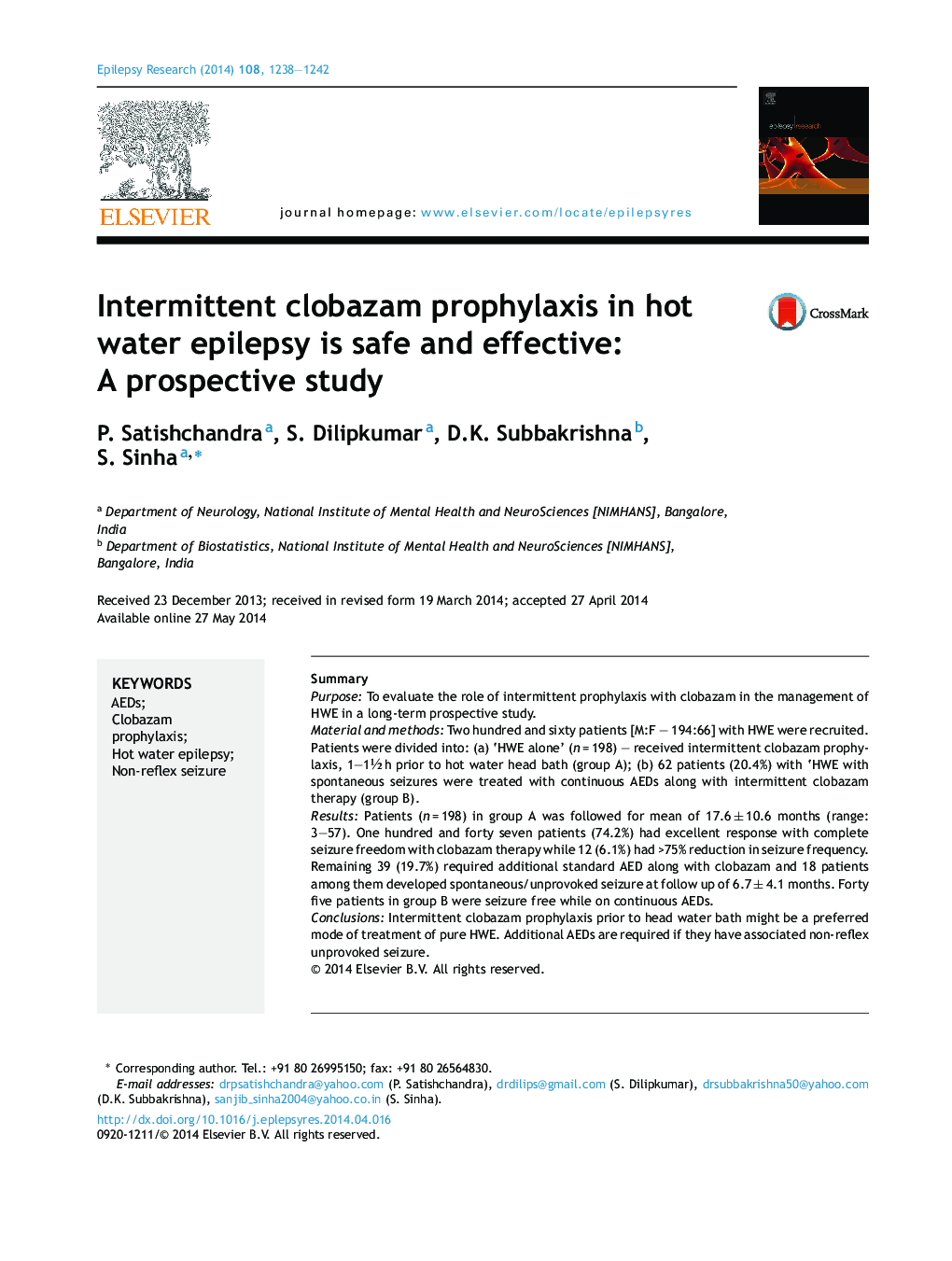| Article ID | Journal | Published Year | Pages | File Type |
|---|---|---|---|---|
| 3052046 | Epilepsy Research | 2014 | 5 Pages |
•Role of intermittent clobazam in hot water epilepsy (n = 260) was studied.•Group A with ‘HWE alone’ (n = 198) received clobazam 1–1½ h prior to hot water head bath.•Group B with ‘HWE with spontaneous seizures’ (n = 62) got continuous AEDs and intermittent clobazam.•147 patients (74.2%) in group A had complete seizure freedom with clobazam.•45 patients (72.6%) in group B were seizure free while on continuous AEDs.
SummaryPurposeTo evaluate the role of intermittent prophylaxis with clobazam in the management of HWE in a long-term prospective study.Material and methodsTwo hundred and sixty patients [M:F – 194:66] with HWE were recruited. Patients were divided into: (a) ‘HWE alone’ (n = 198) – received intermittent clobazam prophylaxis, 1–1½ h prior to hot water head bath (group A); (b) 62 patients (20.4%) with ‘HWE with spontaneous seizures were treated with continuous AEDs along with intermittent clobazam therapy (group B).ResultsPatients (n = 198) in group A was followed for mean of 17.6 ± 10.6 months (range: 3–57). One hundred and forty seven patients (74.2%) had excellent response with complete seizure freedom with clobazam therapy while 12 (6.1%) had >75% reduction in seizure frequency. Remaining 39 (19.7%) required additional standard AED along with clobazam and 18 patients among them developed spontaneous/unprovoked seizure at follow up of 6.7 ± 4.1 months. Forty five patients in group B were seizure free while on continuous AEDs.ConclusionsIntermittent clobazam prophylaxis prior to head water bath might be a preferred mode of treatment of pure HWE. Additional AEDs are required if they have associated non-reflex unprovoked seizure.
